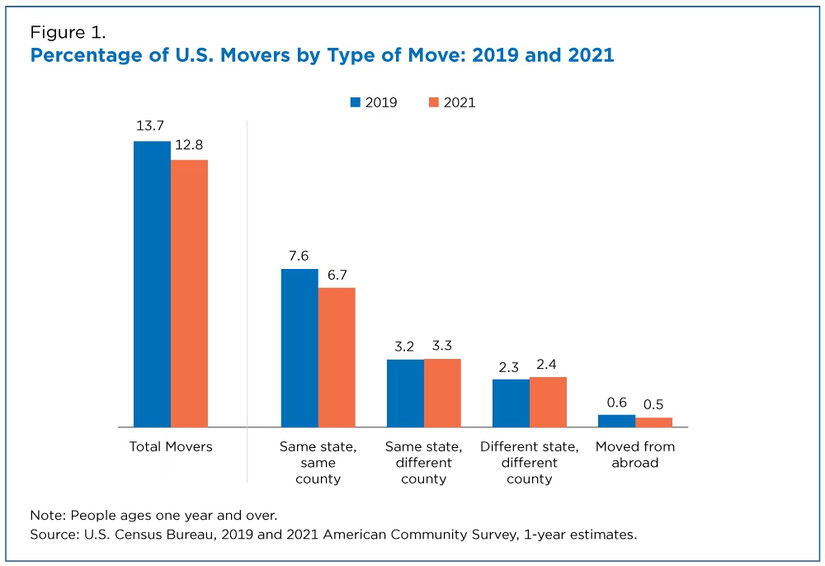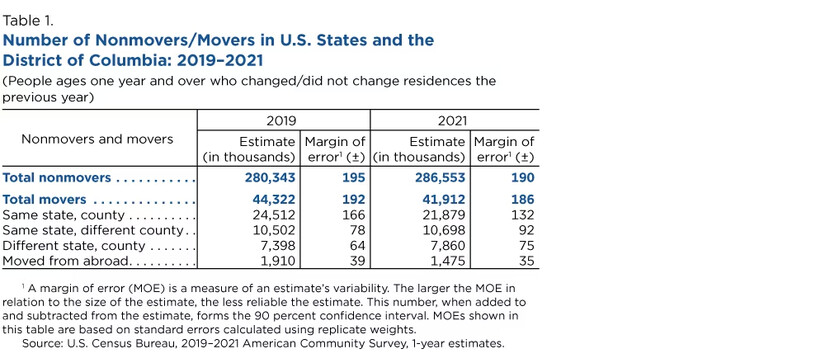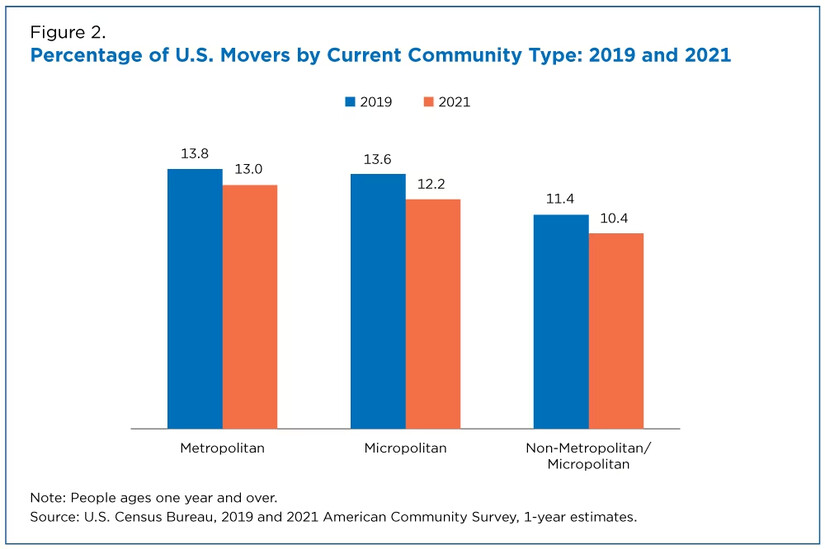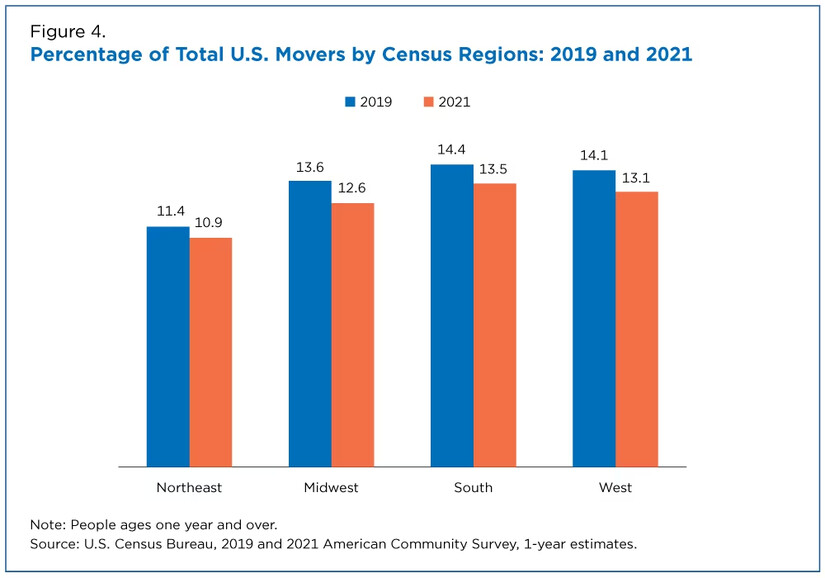Fewer People Moved Domestically in 2021 Than in 2019, But More Are Leaving the Country
Despite predictions that the rise of remote work during the COVID-19 pandemic would encourage greater geographic mobility, the number of domestic movers in the United States actually declined from 2019 to 2021.
According to the 2019 and 2021 American Community Survey (ACS) 1-year estimates, the percentage of people in the United States who moved in the previous year decreased slightly from about 14% to roughly 13%. However, these figures reflect moves that may have occurred before the pandemic began in March 2020.
While the data does not entirely support the expectation that remote work would lead to increased mobility, some states did experience an uptick in moves during this time, indicating a more complex narrative.
Types of Moves
The American Community Survey (ACS) 1-year estimates provide detailed information on the types of moves occurring in the United States, shedding light on changes in national migration patterns. Moves are categorized based on the type of geography people move to and from.
According to the data, in 2019, 7.6% of the U.S. population aged one year or older moved to a new residence in the same county. However, by 2021, that percentage had decreased to 6.7%, as shown in Figure 1.
 Charts Courtesy of the U.S. Census Bureau.
Charts Courtesy of the U.S. Census Bureau.Meanwhile, the percentage of those who reported moving to a new residence in a different county within the same state increased from 3.2% to 3.3% between 2019 and 2021, while movers to a new residence in a different state increased from 2.3% to 2.4% during the same period. The percentage of movers from abroad aged one year or older declined slightly from 0.6% to 0.5% during this period.
While the total mover rate has declined, the decrease appears to be primarily tied to a drop in the number of people making same-county moves, which was the largest category, with roughly 25 million in 2019 and about 22 million in 2021, as reported in Table 1.
 Charts Courtesy of the U.S. Census Bureau.
Charts Courtesy of the U.S. Census Bureau.Moves Across Areas
Mover rates across various types of communities in the United States exhibited different patterns, with variations observed among metropolitan areas (metro), micropolitan areas (micro), and nonmetropolitan/micropolitan (non-metro/micro) regions, according to data from the 2019 and 2021 American Community Survey.
The findings reveal declining mover rates in different types of communities:
- The share of movers residing in metro areas in 2019 dropped from 13.8% to 13.0% in 2021 (as shown in Figure 2).
- The decline was steeper in micro areas (compared to metro areas) where the mover rate decreased from 13.6% to 12.2%.
- Nonmetro/micro areas experienced a decline in mover rates from 11.4% to 10.4%.
 Charts Courtesy of the U.S. Census Bureau.
Charts Courtesy of the U.S. Census Bureau.Similarly to the national trend, changes in mover rates across different types of communities appear to be tied to decreases in same-county moves. Within each community type, the largest percentage decline in mover rates was among those who moved to a new residence within the same county (Figure 3). In micropolitan areas specifically, the percentage of same-county movers decreased from 7.0% in 2019 to 5.9% in 2021.
 Charts Courtesy of the U.S. Census Bureau.
Charts Courtesy of the U.S. Census Bureau.Regional Moves
According to the 2019 and 2021 American Community Survey (ACS) 1-year estimates, all four U.S. Census Bureau regions - Northeast, Midwest, South, and West - experienced declines in the total percentage of movers during this period.
The Northeast saw the smallest decline, from 11.4% to 11.0%, while the Midwest, South, and West each experienced declines of around 1 percentage point.
Notably, the percentage of same-county movers declined in all four regions, indicating a possible link between these declines and the overall decrease in mover rates.
 Charts Courtesy of the U.S. Census Bureau.
Charts Courtesy of the U.S. Census Bureau.In summary, while there was some anticipation that the COVID-19 pandemic and the rise of remote work would increase geographic mobility in the United States, the latest data from the American Community Survey show that the total percentage of movers actually declined between 2019 and 2021.
The decline appears to be primarily driven by a drop in same-county moves, the largest category of moves. While some types of moves did increase, such as those to different states, the overall trend suggests a more nuanced story than a simple increase in mobility. Mover rates also varied by type of community and region, with declines occurring across the board.
The full impact of the pandemic on migration patterns remains to be seen as the 2021 data may not reflect the complete effect of the pandemic.













